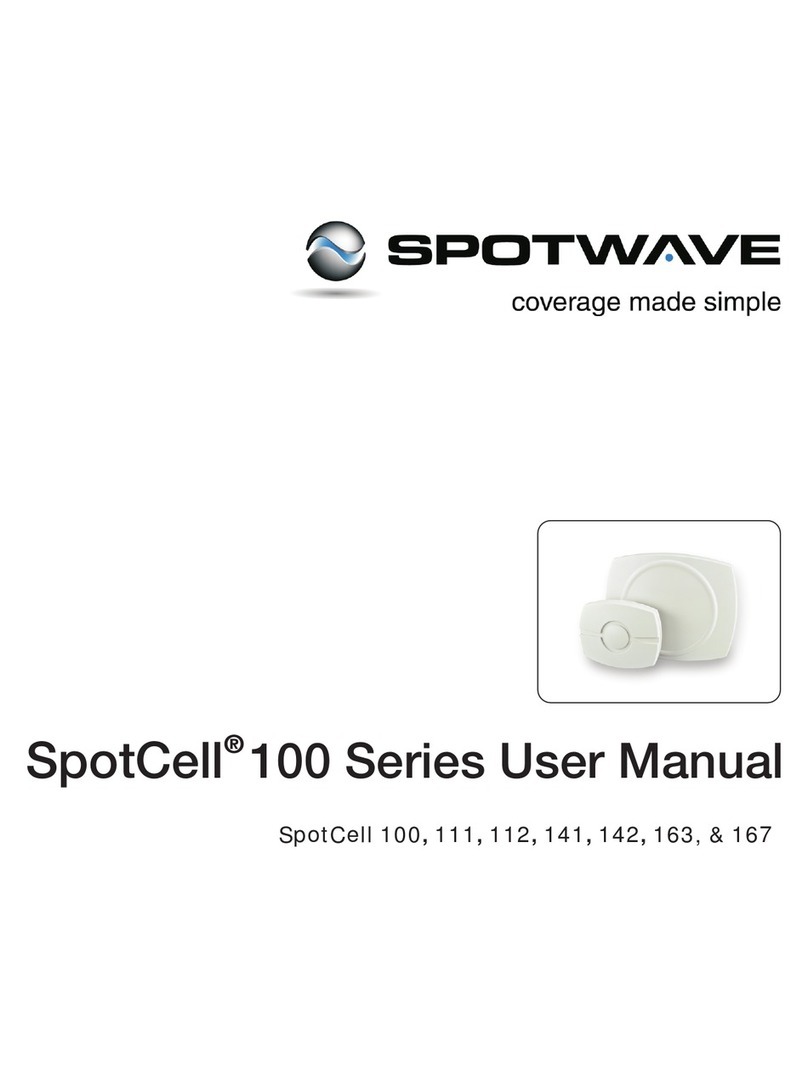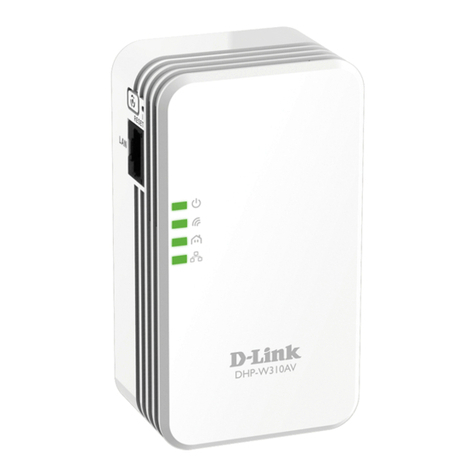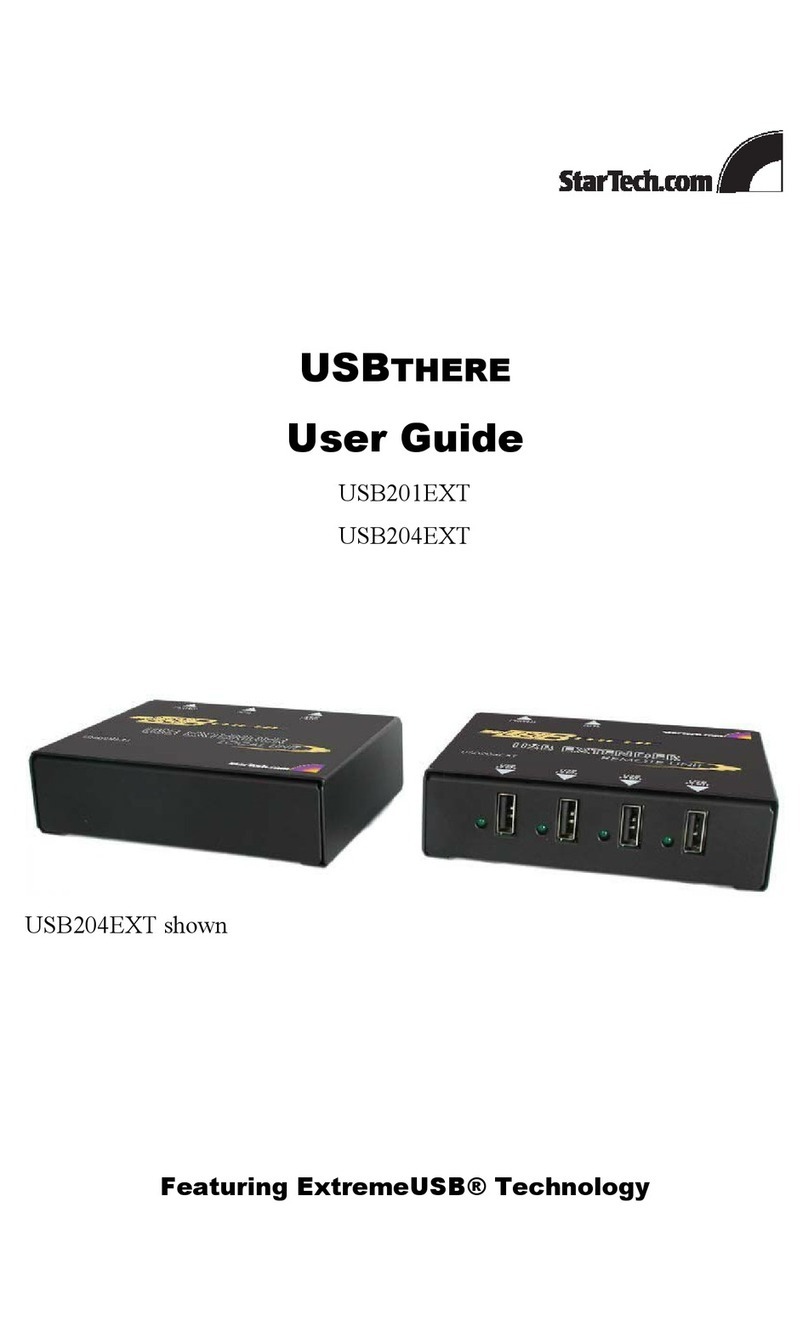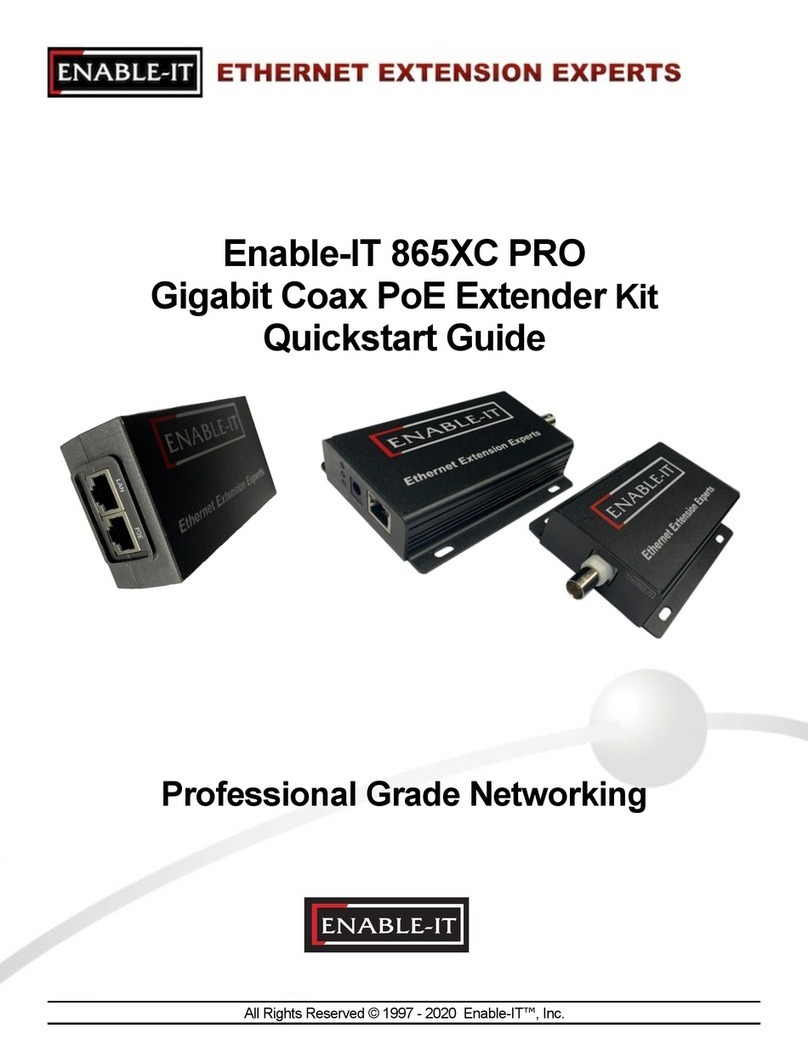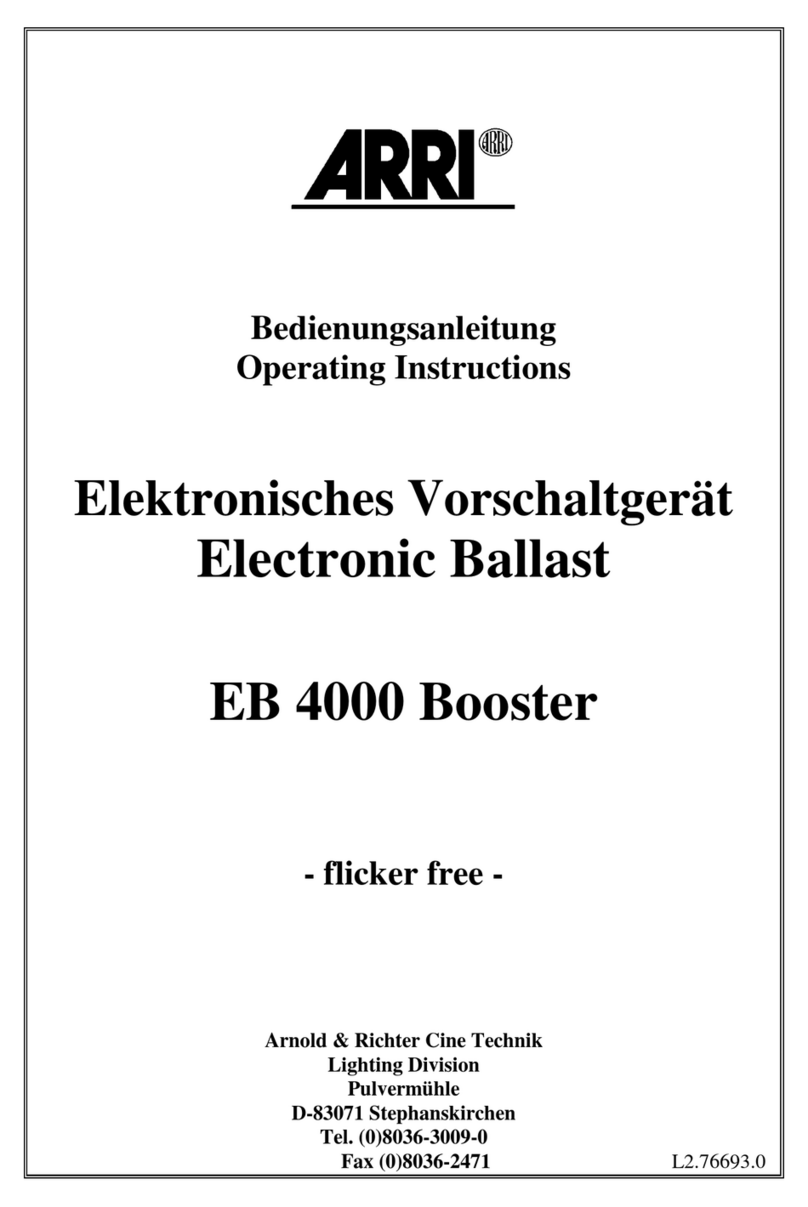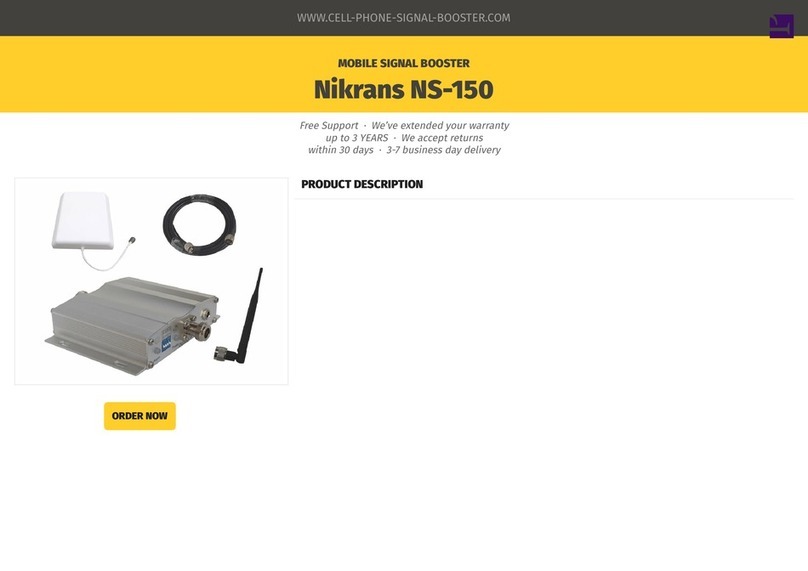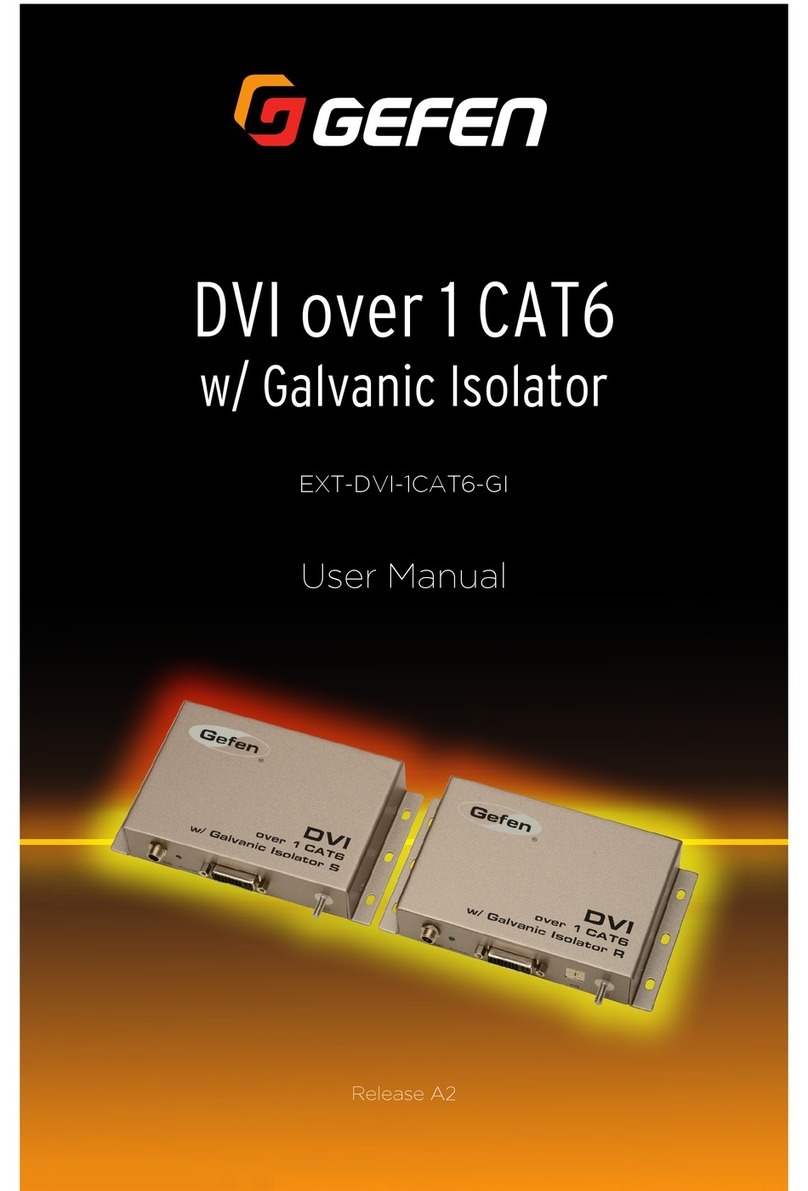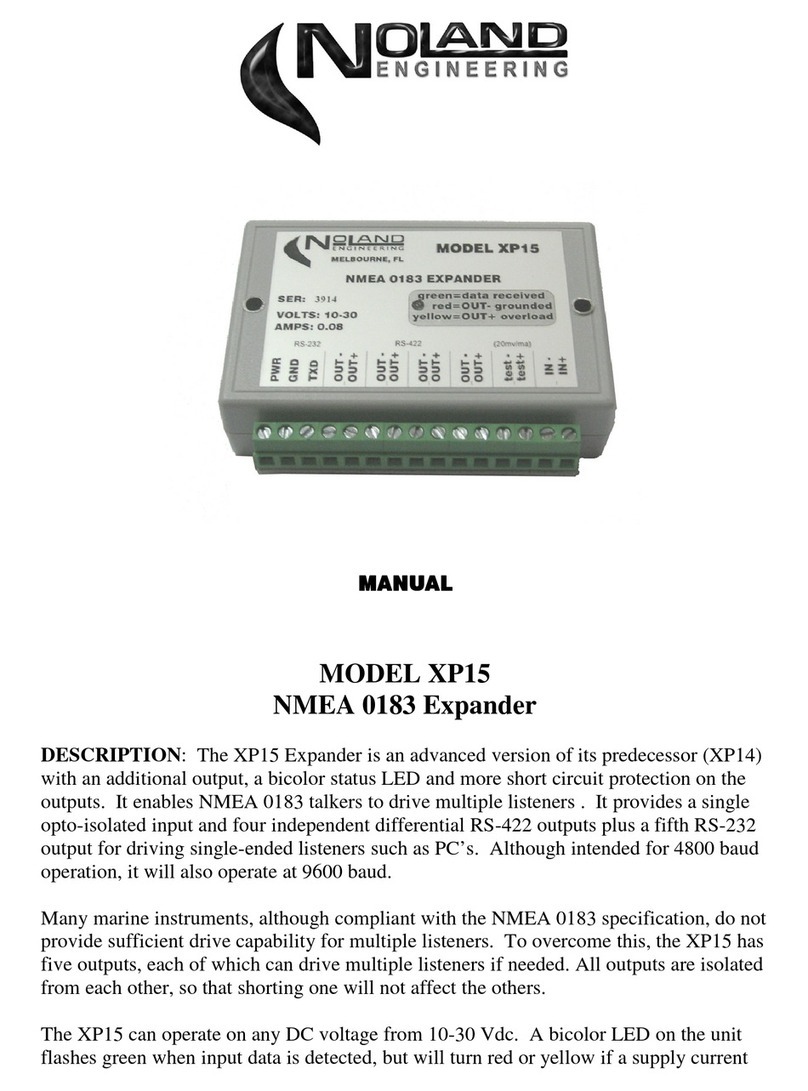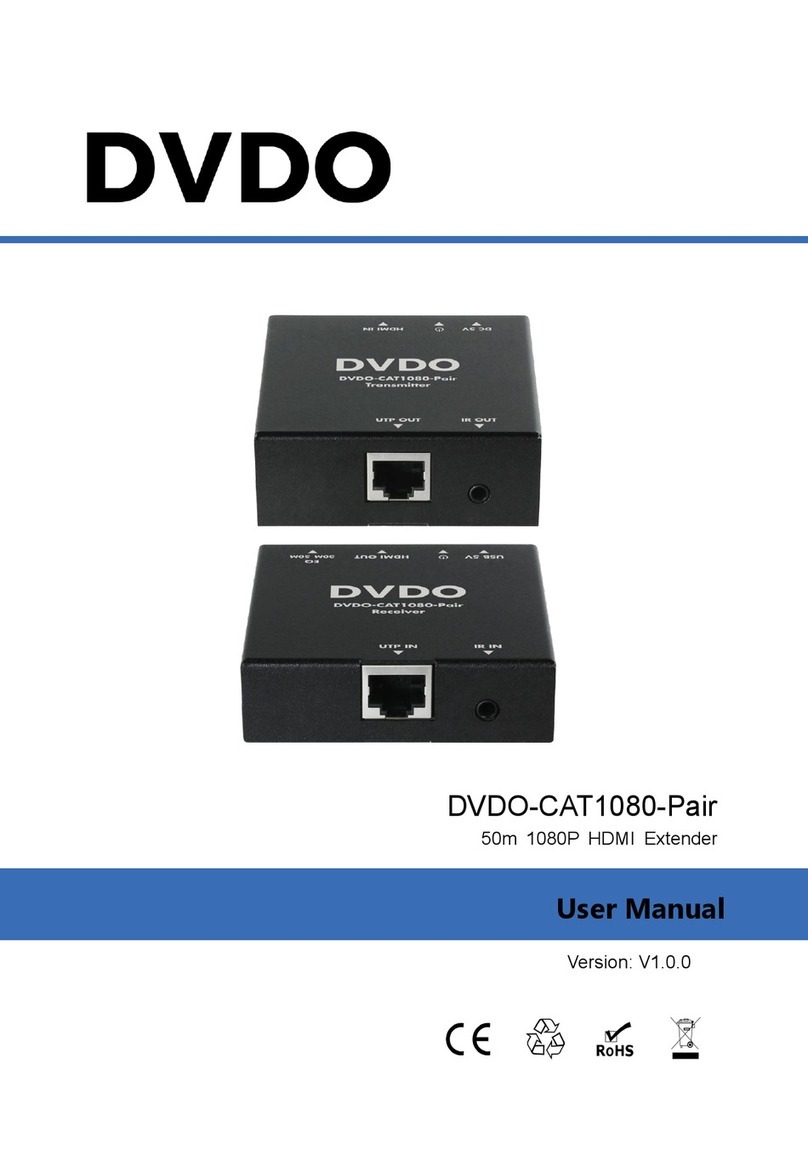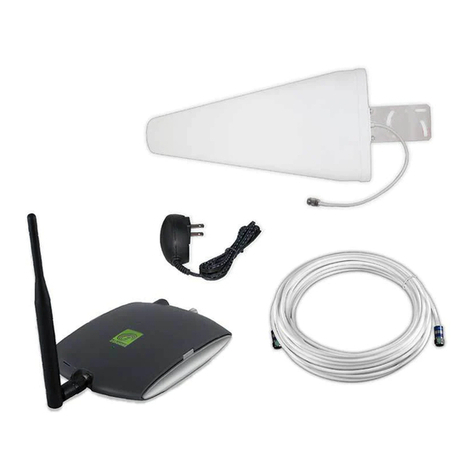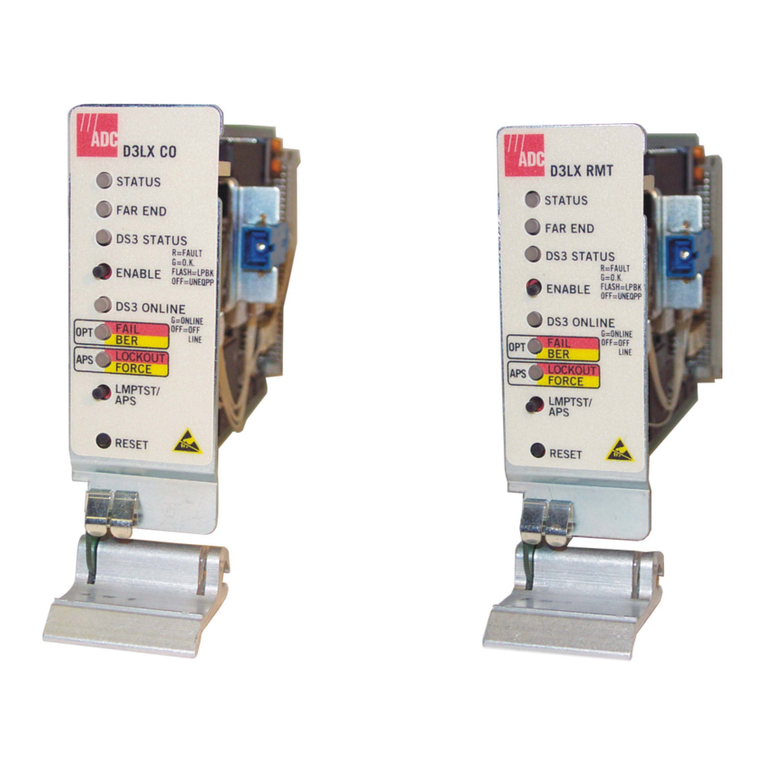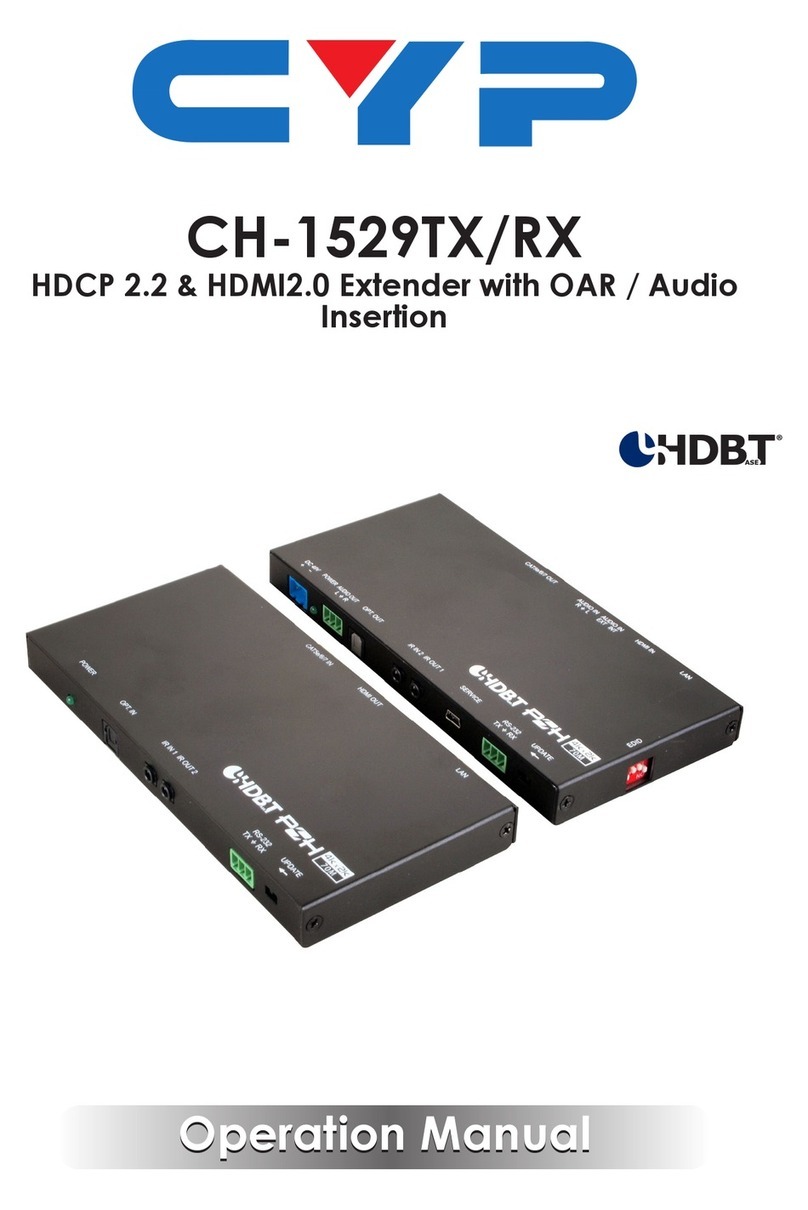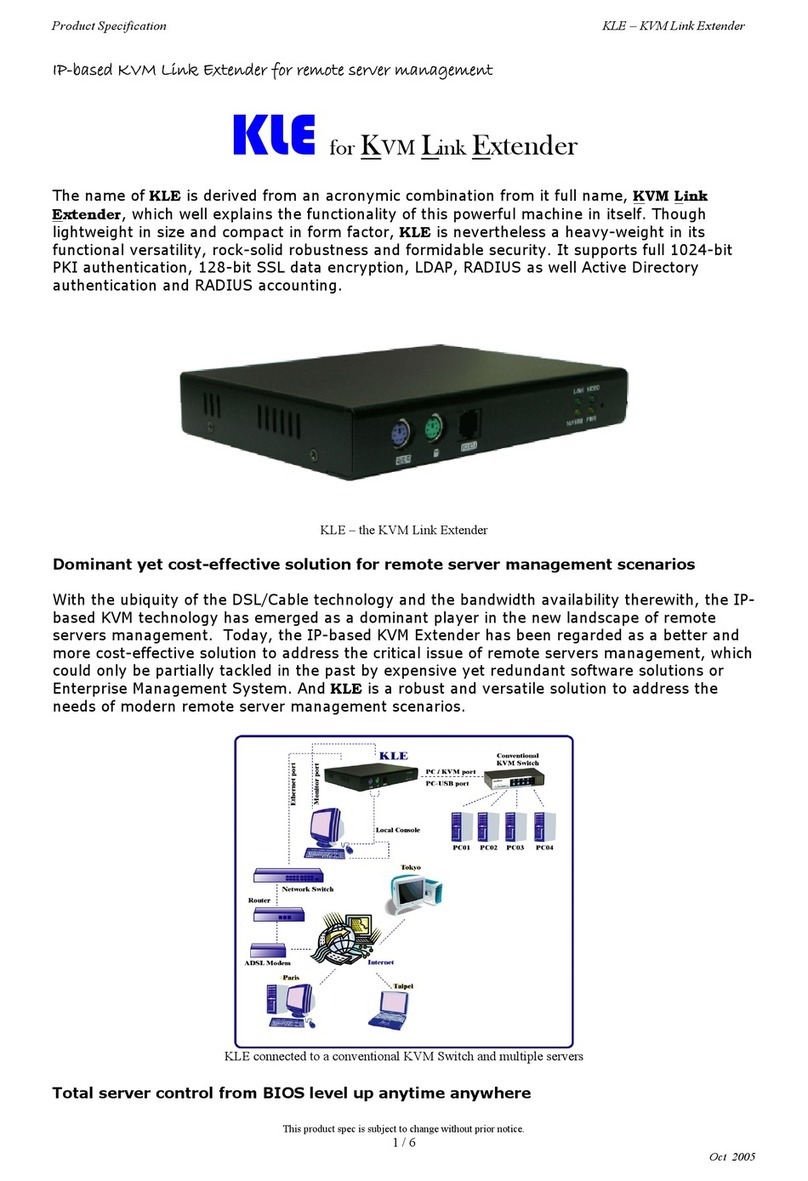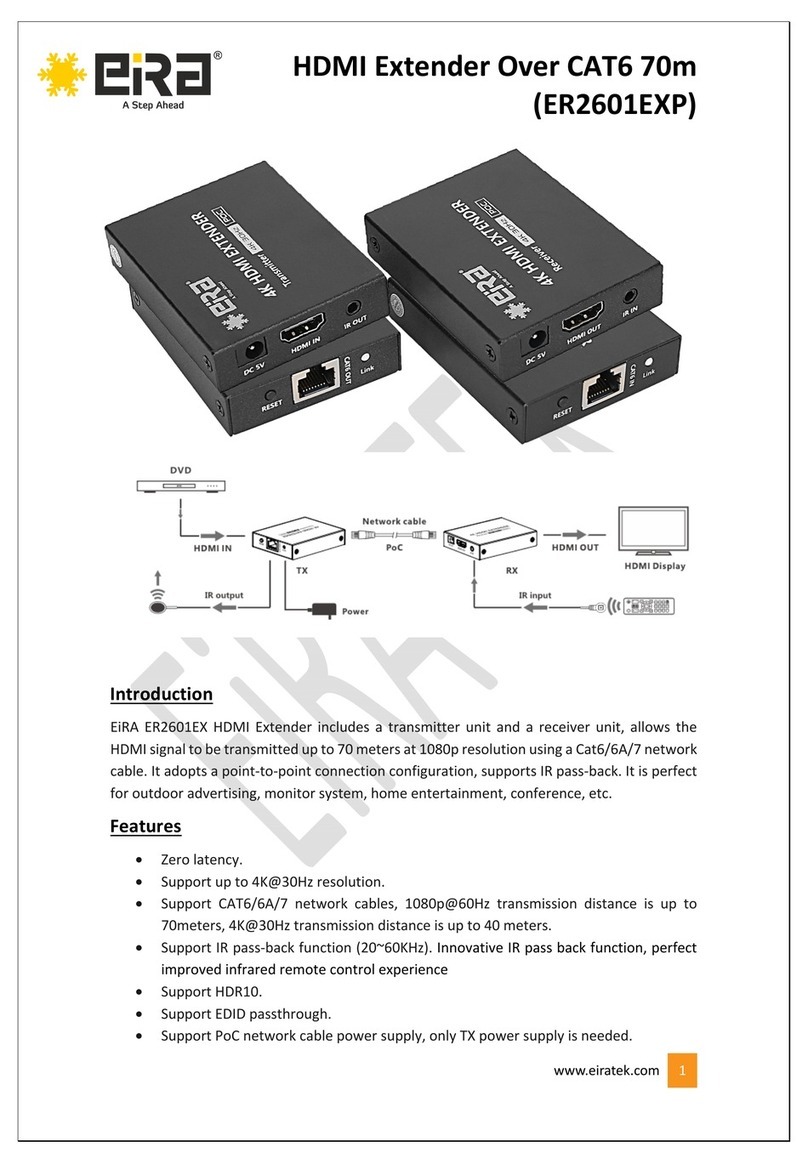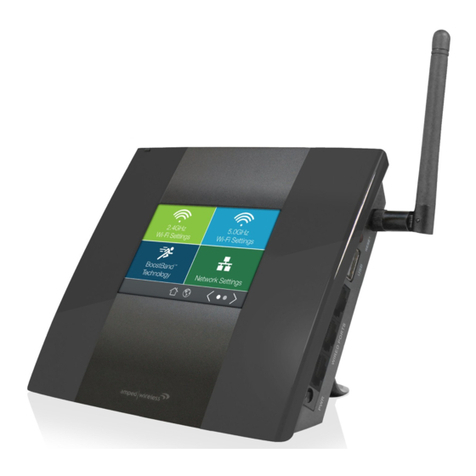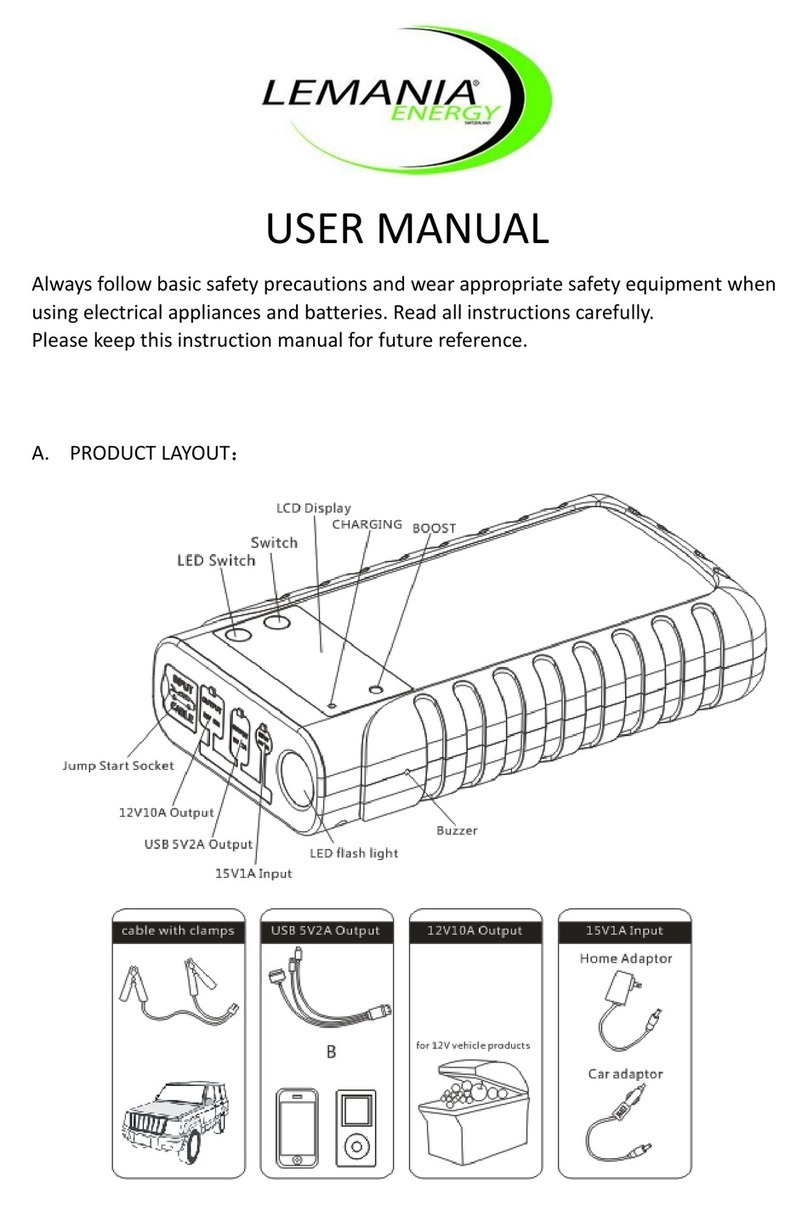Spotwave SpotCell 100 SCU User manual

Technical Support
The SpotCell 100 serial number must be available to authorize technical
support and/or to establish a return authorization for defective units.
The serial number is located on the back of the SCU and DDU as well
as the box in which they were delivered. Additional support information
may be obtained by accessing the SpotwaveWireless Inc. website at
www.spotwave.com. To contact support by telephone, call your local
Cellular provider, or if you are unable to contact your provider, contact
Spotwave Wireless at 1-877-610-9586.
Important Safety Information
Warning! For your safety, beware of power lines and ensure appropriate
safety measures are maintained at all times during the installation of the
SpotCell equipment. If equipment not shipped with the SpotCell system
is to be used during installation or mounting, follow all equipment
manufacture’s instructions in proper use to ensure injury is avoided.
The DDU unit of the SpotCell 100 emits approximately the same power
as a cell phone. As with a cell phone antenna, avoid unneccessary contact
with the front of the unit after installed. Mount in a location where
people will not approach within one meter of the front of the unit.
This manual outlines installation instructions and the appendix offers
practical safety tips (see page 43 entitled ‘Safety Hints’).
If you are not sure about a safe installation, do not attempt to install it
yourself. Call a professional installer for help.

ii SpotCell 100, Release 1.0
LIMITED WARRANTY AND LIMITATION OF LIABILITY:
1. What is Covered and for How Long? Spotwave Wireless Inc. ("Spotwave") warrants to the original
Purchaser that the Spotwave SpotCell System (the "System") is free from defects in material and workmanship
under normal use and service for a period of 12 months from the date of shipment from Spotwave (the "Limited
Warranty Period").
2. What is not covered? This Limited Warranty is conditioned upon proper use of the System by the Purchaser.
This Limited Warranty does not cover (and will become null and void in the event of): (a) defects or damage
resulting from accident, misuse, abuse, neglect, unusual physical, electrical or electromechanical stress,
modification of the System or any part thereof, or cosmetic damage; (b) removal, alteration or defacing of the
serial number or other identifying marks on the System; (c) all plastic surfaces and other externally exposed
components that are scratched or damaged due to normal use; (d) malfunctions resulting from the use of the
System in conjunction with accessories, products or (ancillary) or peripheral equipment not provided by
Spotwave; or (e) defects or damage from unauthorized or improper testing, operation, maintenance, installation,
servicing or adjustment of the System. Any repairs or replacements provided by Spotwave outside of the Limited
Warranty Period (including repairs to or replacement after the end of the Warranty Period), or in excess of the
services provided during the LimitedWarranty Period, will subject to Spotwave's then prevailing rates.
3. What are Spotwave's Obligations and how do you make a claim? During the LimitedWarranty Period,
Spotwave will repair or replace, at Spotwave's sole option, without charge to Purchaser, any defective component
of the System, provided that the System is returned promptly upon discovery of the defect and during the Limited
Warranty Period. To obtain service, Systems must be returned to an authorized service facility in the original
packaging or packaging adequate for shipping, accompanied by Purchaser's sales receipt or comparable substitute
proof of sale showing the date of purchase and the serial number of the System. A valid RMA is required prior to
any return.
To locate your nearest authorized service facility, call Spotwave Customer Service at 1-877-610-9586.
Spotwave may, at Spotwave's sole option, use rebuilt, reconditioned, or new parts or components when repairing
any System or replace a System with a rebuilt, reconditioned or new System. Repaired Systems will be warranted
for a period equal to the remainder of the original Limited Warranty Period for the original System or for 90 days,
whichever is longer. All replaced parts, components, boards or equipment shall become the property of Spotwave.
If Spotwave determines that any System is not covered by this Limited Warranty, Purchaser must pay the costs for
all parts, shipping, and labor charges for the repair or return of such System.
4. What are the Limits on Spotwave's Liability? EXCEPT FOR THE WARRANTY IN PARAGRAPH 1,
THE SYSTEMS AND ANY ASSOCIATED SERVICES ARE PROVIDED BY SPOTWAVE ON AS 'AS IS'
BASIS AND THERE ARE NO OTHER REPRESENTATIONS, WARRANTIES OR CONDITIONS,
,EXPRESS OR IMPLIED, WRITTEN OR ORAL, ARISING BY STATUTE, OPERATION OF LAW,
COURSE OF DEALING, USAGE OF TRADE OR OTHERWISE, REGARDING THEM OR ANY OTHER
PRODUCT OR SERVICE PROVIDED HEREUNDER OR IN CONNECTION HEREWITH BY
SPOTWAVE. SPOTWAVE DISCLAIMS ANY IMPLIED WARRANTIES OR CONDITIONS OF
DURABILITY, MERCHANT ABILITY, MERCHANTABLE QUALITY, SATISFACTORY QUALITY, NON-
INFRINGEMENT OR FITNESS FOR A PARTICULAR PURPOSE. SPOTWAVE DOES NOT
REPRESENT OR WARRANT THAT THE SYSTEMS WILL MEET ANY OR ALL OF PURCHASERS'
PARTICULAR REQUIREMENTS, THAT THE SYSTEMS WILL OPERATE ERROR-FREE OR
UNINTERRUPTED OR THAT ALL ERRORS OR DEFECTS IN THE SYSTEMS CAN BE FOUND TO
BE CORRECTED. System performance is dependant upon the performance and availability of services or
technology provided by third parties and Spotwave is not responsible for service continuity and reliability,
reception, or other performance related limitations associated with use of the Systems. NO AGREEMENTS
VARYING OR EXTENDING THE TERMS OF THIS LIMITED WARRANTY WILL BE BINDING ON
SPOTWAVE UNLESS IN WRITING AND SIGNED BY AN AUTHORIZED SIGNING OFFICER OF
SPOTWAVE THIS LIMITED WARRANTY SHALL NOT EXTEND TO ANYONE OTHER THAN THE
ORIGINAL PURCHASER OF THE SYSTEM. SPOTWAVE'S MAXIMUM AGGREGATE LIABILITY TO
PURCHASER SHALL NOT EXCEED THE AMOUNTS PAID BY PURCHASER FOR THE SYSTEM
GIVING RISE TO THE CLAIM. SPOTWAVE SHALL NOT BE LIABLE FOR ANY SPECIAL,
INCIDENTAL, CONSEQUENTIAL, INDIRECT OR SIMILAR DAMAGES, LOSS OF USE, DATA OR
PROFITS, DAMAGES TO PURCHASER'S PROPERTY, OR INJURY TO PURCHASER OR OTHERS
ARISING OUT OF THE USE, MISUSE OR INABILITY TO USE ANY SYSTEM, WHETHER OR NOT
SUCH DAMAGE ARISES OUT OF CONTRACT OR TORT (INCLUDING WITHOUT LIMITATION,
NEGLIGENCE) OR CLAIMS BY A THIRD PARTY, EVEN IF SPOTWAVE HAS BEEN ADVISED OF
SUCH DAMAGES OR THEY ARE FORESEEABLE

Spotwave Wireless Inc. iii
5. This Limited Warranty allocates risk between Purchaser and Spotwave, and the Spotwave System pricing
reflects this allocation of risk and the limitations of liability contained in this Limited Warranty. The agents,
employees, distributors, dealers or representative of Spotwave are not authorized to make modifications to this
Limited Warranty, or make additional warranties binding on Spotwave. Accordingly, additional statements such
as advertising or presentations, whether oral or written, do not constitute warranties by Spotwave and should not
be relied upon.
1.1 OWNERSHIP AND RISK OF LOSS:
6. Who Owns the rights in the System? The System is protected by Canadian, US and international copyright
law and other intellectual property protection laws and treaties. Purchaser acknowledges that Spotwave and its
licensors are the owner of all intellectual property, including, without limitation, patents and copyright,
relating to the System and the trademarks used in association with the System. Purchaser agrees that it will not
(and will not attempt to) modify, prepare derivative works of, reverse engineer, decompile, disassemble, or other
attempt to derive the source code of any software contained within the System.
7. Who bears the Risk of Loss? Risk of loss for the System passes to Purchaser upon the delivery to Purchaser
or to a carrier for shipment, which ever is earlier. Title to the Systems (excluding any software) will pass upon
payment in full for the Systems. Title to any software shall always remain with Spotwave or its licensors. As
security for payment, Purchaser grants to Spotwave a purchase money security interest in the Systems (together
with any proceeds, including insurance proceeds) and agrees that a copy of this letter of agreement or any other
appropriate document may be registered as required to perfect the security interest granted. Systems may be resold
by Purchaser in normal course of business, but until paid for in full, Purchaser will not pledge or otherwise
encumber the Systems. Purchaser agrees to immediately report to Spotwave, any seizure or attachment of the
Systems by creditors; (ii) any petition in bankruptcy, insolvency, receivership or similar proceedings filed by, or
against Purchaser; or (iii) any arrangement, composition or similar agreement for the benefit of creditors. Systems
held for Purchaser by Spotwave are at Purchaser's sole risk and expense.
OTHER TERMS:
8. What terms govern our relationship? These terms and any software license or warranty documentation
accompanying the Systems constitute the complete and exclusive statement of the terms and conditions between
us regarding the Systems and cannot be altered, amended or modified except in writing executed by Spotwave.
This letter of agreement and any disputes arising hereunder shall be governed by and interpreted in accordance
with the laws of the Province of Ontario, Canada. The United Nations Convention on Contracts for the
International Sale of Goods and any legislation implementing such Convention, if otherwise applicable is
expressly excluded. Any terms and conditions of any purchase order or other instrument issued by Purchaser
which are in addition to or inconsistent with the terms and conditions of this letter of agreement shall not be
binding and shall not apply, even if accepted by Spotwave.

iv SpotCell 100, Release 1.0

SpotCell 100, Release 1.0 v
Table of Contents
Introduction . . . . . . . . . . . . . . . . . . . . . . . . . . . . . . . . . . . . . . . . . . .1
This manual . . . . . . . . . . . . . . . . . . . . . . . . . . . . . . . . . . . . . . . .1
About Installation . . . . . . . . . . . . . . . . . . . . . . . . . . . . . . . . . . . 1
Product Overview . . . . . . . . . . . . . . . . . . . . . . . . . . . . . . . . . . . 1
Getting Started . . . . . . . . . . . . . . . . . . . . . . . . . . . . . . . . . . . . . . . . . 3
Packing list - SpotCell 100 . . . . . . . . . . . . . . . . . . . . . . . . . . . . 3
Unpacking and inspecting . . . . . . . . . . . . . . . . . . . . . . . . . . . . . 5
Installation . . . . . . . . . . . . . . . . . . . . . . . . . . . . . . . . . . . . . . . . . . . . 7
Preparing for installation . . . . . . . . . . . . . . . . . . . . . . . . . . . . . . 7
Signal Strength . . . . . . . . . . . . . . . . . . . . . . . . . . . . . . . .7
DDU Height . . . . . . . . . . . . . . . . . . . . . . . . . . . . . . . . . . 7
Avoid obstructions . . . . . . . . . . . . . . . . . . . . . . . . . . . . . 8
Proximity to power source . . . . . . . . . . . . . . . . . . . . . . . 8
Distance between DDU and SCU . . . . . . . . . . . . . . . . .8
Orientation of DDU relative to SCU . . . . . . . . . . . . . . .8
Barrier between DDU and SCU . . . . . . . . . . . . . . . . . . . 8
Positioning the SpotCell 100 DDU (outward facing unit) . . . . . 8
Installing the DDU . . . . . . . . . . . . . . . . . . . . . . . . . . . . . 9
Choosing a location for the SpotCell 100 SCU (indoor unit) . . 12
Positioning the SCU . . . . . . . . . . . . . . . . . . . . . . . . . . . . 12
Mounting . . . . . . . . . . . . . . . . . . . . . . . . . . . . . . . . . . . . . . . . . . . . . 15
Running the cable through a wall . . . . . . . . . . . . . . . . . . . . . . . 15
Mounting the DDU . . . . . . . . . . . . . . . . . . . . . . . . . . . . . . . . . . 15
Wall mounting . . . . . . . . . . . . . . . . . . . . . . . . . . . . . . . . 16
Overhead mounting . . . . . . . . . . . . . . . . . . . . . . . . . . . . 16
Horizontal surface mounting . . . . . . . . . . . . . . . . . . . . . 17
Side wall mounting . . . . . . . . . . . . . . . . . . . . . . . . . . . . 17

vi SpotCell 100, Release 1.0
Side window frame mounting . . . . . . . . . . . . . . . . . . . . 18
Pipe mounting . . . . . . . . . . . . . . . . . . . . . . . . . . . . . . . .18
DDU Outdoor mounting . . . . . . . . . . . . . . . . . . . . . . . . . . . . . .19
Mounting to a wood structure . . . . . . . . . . . . . . . . . . . .19
Mounting to a brick or concrete structure: . . . . . . . . . . . 19
Mounting to a pipe or tubing: . . . . . . . . . . . . . . . . . . . . 19
Attaching the cable . . . . . . . . . . . . . . . . . . . . . . . . . . . . 20
Bringing the cable indoors . . . . . . . . . . . . . . . . . . . . . . . 21
DDU indoor mounting . . . . . . . . . . . . . . . . . . . . . . . . . . . . . . . .21
Mounting the SCU . . . . . . . . . . . . . . . . . . . . . . . . . . . . . . . . . . . 22
Grounding: . . . . . . . . . . . . . . . . . . . . . . . . . . . . . . . . . . . 23
Displayed Information . . . . . . . . . . . . . . . . . . . . . . . . . . . . . . . . . . .25
DDU (outward facing unit) . . . . . . . . . . . . . . . . . . . . . . . . . . . . 25
SCU . . . . . . . . . . . . . . . . . . . . . . . . . . . . . . . . . . . . . . . . . . . . . .26
Trouble Shooting Information . . . . . . . . . . . . . . . . . . . . . . . . . . . . . 29
Applications overview . . . . . . . . . . . . . . . . . . . . . . . . . . . . . . . . . . .33
Components and Installation . . . . . . . . . . . . . . . . . . . . . . . . . . . 33
Operation . . . . . . . . . . . . . . . . . . . . . . . . . . . . . . . . . . . . . . . . . .36
System Specifications . . . . . . . . . . . . . . . . . . . . . . . . . . . . . . . . . . . 39
DDU LED signal indications: . . . . . . . . . . . . . . . . . . . . . . . . . . 39
Antenna beam width: . . . . . . . . . . . . . . . . . . . . . . . . . . . . . . . . .39
SCU Antenna Summary . . . . . . . . . . . . . . . . . . . . . . . . . 39
DDU Antenna Summary . . . . . . . . . . . . . . . . . . . . . . . . 40
Architecture . . . . . . . . . . . . . . . . . . . . . . . . . . . . . . . . . . . . . . . . 40
Physical. . . . . . . . . . . . . . . . . . . . . . . . . . . . . . . . . . . . . .41
Installation . . . . . . . . . . . . . . . . . . . . . . . . . . . . . . . . . . . 41
Diagnostics . . . . . . . . . . . . . . . . . . . . . . . . . . . . . . . . . . .41
Safety Hints . . . . . . . . . . . . . . . . . . . . . . . . . . . . . . . . . . . . . . . . . . . 43
Lightning . . . . . . . . . . . . . . . . . . . . . . . . . . . . . . . . . . . . . . . . . . 43
Working Aloft . . . . . . . . . . . . . . . . . . . . . . . . . . . . . . . . . . . . . .43
Power Tools . . . . . . . . . . . . . . . . . . . . . . . . . . . . . . . . . . 44
Working with Ladders . . . . . . . . . . . . . . . . . . . . . . . . . . 44
Grounding . . . . . . . . . . . . . . . . . . . . . . . . . . . . . . . . . . .44
Overhead Power Lines . . . . . . . . . . . . . . . . . . . . . . . . . . . . . . . . 44

Spotwave Wireless Inc. 1
1 – Introduction
1.1 This manual
The contents of this manual complements the Quick Install Guide, and
provides specific details that may be referred to if necessary during
installation of the SpotCell 100™system.
1.2 About Installation
Installation of the SpotCell 100 does not require any specialized
technical knowledge.
The SpotCell 100 can be installed by any person(s) with the ability to
use a screwdriver, and in some situations may require the use of a ladder,
drill, and additional related tools.
1.3 Product Overview
The SpotCell 100 is a next-generation cellular technology, which
compliments existing cellular technologies. The purpose of the SpotCell
100 is to enable personal cellular communications in specific locations
within a cellular service area where cell phones do not work, or work
poorly, for example inside a building, or at the cell boundary.

INTRODUCTION
2SpotCell 100, Release 1.0
The SpotCell 100 system receives signals from one or more cellular base
stations and re-transmits the signal to areas where cell phones do not
work or work poorly due to obstructions or the remoteness of the
location.
Figure 1.1: Signal from base station does reach cellular subscriber
Figure 1.2: SpotCell 100 improves cellular communications

Spotwave Wireless Inc. 3
2 – Getting Started
2.1 Packing list - SpotCell 100
The SpotCell 100 is shipped in a single box containing:
Directional Donor Unit (DDU) - this is the outward facing part of
the assembly.
Subscriber Coverage Unit (SCU) - this is the indoor part of the
assembly.
Power Adapter - to be plugged into an electrical outlet, and
connected to the SCU.
Cable - used to connect the SCU and DDU together.
Mounting Kit which includes:
angled bracket (1) for DDU
1/4” x 3/4” pan head screws (6)
1/4” x 2” hex screws (2)
No. 10 x 2.5” wood screws (2)
No. 6 x 1.5” wood screws (20)
1/4” lock nuts (4)
split lock washers (2)
hose clamps (2)

GETTING STARTED
4SpotCell 100, Release 1.0
cable loop strap (10)
cable tie, black outdoor (10)
cable tie, natural outdoor (10)
screw anchors, plastic (10)
screw anchors, concrete (10)
drwwall anchor (1)
1/4” screw anchor, concrete (2)
caulking cord (1)
Note: Parts are provided for the majority of installation options, but do
not cover all possibilities. You may need to purchase additional hardware
specific to your mounting environment before you begin the
installation. A tripod and mast would be typical additional equipment
purchased for mounting the SpotCell 100 DDU on a rooftop.
Figure 2.1: Components of the SpotCell 100 package
DDU
SCU
Power
Adapter
Cable

Spotwave Wireless Inc. 5
2.2 Unpacking and inspecting
Physically inspect the box for shipping damage before unpacking the
SpotCell 100.
1. Remove the SpotCell 100 components from the box.
2. Remove all packing material from the Directional Donor Unit
(DDU) and the Subscriber Coverage Unit (SCU). Save the
packaging in case the SpotCell 100 is ever stored or shipped to
SpotWave for service.
3. Check the contents of the package to make sure you have received
everything ordered and verify that the mounting kit contains all the
listed parts.
4. Check the DDU and SCU for shipping damage. Pay particular
attention to the unit’s outer shell casing.

GETTING STARTED
6SpotCell 100, Release 1.0

Spotwave Wireless Inc. 7
3 – Installation
3.1 Preparing for installation
The following are general considerations and preparations that should
be looked at before installing the SpotCell 100.
3.1.1 Signal Strength
The SpotCell 100 system brings signals from an area of adequate
coverage to an area with poor or non-existent coverage. It is the DDU
which captures a good signal, and the SCU that provides the signal to
the area with poor cell phone coverage. The DDU can be mounted
inside or outside, as long as it is in an area where your cell phone works
(even if your cell phone is only marginally working). Generally, the
better your cell phone works at the location the DDU is mounted, the
better the system will perform.
3.1.2 DDU Height
In fringe or densely built-up areas, locating the DDU as high as possible
will provide optimal performance.

INSTALLATION
8SpotCell 100, Release 1.0
3.1.3 Avoid obstructions
General placement of the DDU and SCU must be in unobstructed
areas. For example, the SCU should not be placed on a wall behind any
type of furniture (behind items such as metal filing cabinets would be a
particularly poor location). Similarly for the DDU, the front of the unit
should not be directly facing any type of metal structures, which are
often found on building rooftops.
3.1.4 Proximity to power source
The indoor unit must be located within 20 feet of a power source.
3.1.5 Distance between DDU and SCU
Although you should separate the DDU and SCU as much as possible,
there are only 25 meters of cabling provided to connect the two units.
Make sure the general location of the two units is within 25 meters.
Note: An additional cable or extension, made from copper core RG6
quad shield cable, may be inserted, to a maximum of 50 meters total
length.
3.1.6 Orientation of DDU relative to SCU
If possible face the DDU and SCU in opposite directions, and back to
back. While not a requirement, some installations will perform better if
the units are positioned in this manner.
3.1.7 Barrier between DDU and SCU
The greater the physical obstruction between the DDU and SCU, the
better the performance. Dense obstructions such as brick, concrete or
metal walls are better than wooden or plaster walls.
3.2 Positioning the SpotCell 100 DDU (outward facing unit)
It may not be possible to install the DDU indoors when installing the
SpotCell 100 in remote areas. An effort should be made to install the
DDU outdoors and the DDU should be installed as high as possible
when the installation is in a remote area,

Spotwave Wireless Inc. 9
3.2.8 Installing the DDU
Three methods of positioning the DDU (based on location) are outlined
in the following procedure. Specifically they refer to installing inside
buildings, on external walls, and on rooftops.
1. Position the DDU (but do not mount it) as close to the final desired
mounting location as possible. The SCU does not have to be in its
final location while positioning the DDU and it is usually helpful to
have the SCU near the DDU.
2. Connect the DDU and SCU with the enclosed RF cable.
3. Connect the power supply wires to the SCU by holding down the
blue tab and pushing the positive wire (marked with text) into the
positive (+) side of the connector. While still holding down the blue
tab, push the remaining negative wire (identified by no text) into
the negative (-) side of the connector. Release the tab to secure the
power supply wires.
Figure 3.1: Inserting wires in SCU to supply power
Indoors Roof External wall
While not strictly
required, it is highly
recommended the
DDU be installed
facing a window
when installed
indoors.
The SCU does not have to be in its final
position at this time, but it should not be
brought outdoors.

INSTALLATION
10 SpotCell 100, Release 1.0
4. Plug the power supply adapter into a wall socket
5. Ensure the switch on the SCU is in the ‘Install’ position.
Figure 3.2: SCU switch location
6. To align, hold the DDU upright and:
7. As you are rotating, you will notice that the LED on the back of the
DDU will light up green, red or amber; this is normal.
Indoors Roof External wall
Rotate the face of
the DDU from left
to right in front of
the window.
If not in front of a
window, rotate the
DDU in a complete
circle.
Rotate it in a full
circle. A time of 10
seconds is
appropriate to fully
complete the
rotation.
Rotate the face of
the unit from left to
right within the
constraints allowed
by the wall.
SCU
switch
window
wall

Spotwave Wireless Inc. 11
8. Again, rotate the DDU as in step 6, this time stopping each time the
LED is green and note the direction the DDU is facing (the LED
may turn green once or multiple times). This is an indication of
the signal strength the DDU is receiving from the cellular phone
tower. The DDU should be mounted facing the direction the DDU
was pointed for the longest period of time the LED was green
during its rotation.
9. For inside installation and exterior wall mountings, it is
recommended that various walls and locations within the structure
be tested as suitable locations to position the DDU. For each
location the DDU is tested and the LED is green, the display on the
bottom of the SCU indicates the relative signal strength that the
DDU is receiving.
Figure 3.3: Displayed signal strength
Mount the DDU in the location that has the highest indicated
signal level.
Note: With some tall buildings, it may be necessary to tilt the DDU
down to get a good signal (green LED).
10. Proceed to page 15 for mounting instructions once the DDU
location has been optimized.

INSTALLATION
12 SpotCell 100, Release 1.0
3.3 Choosing a location for the SpotCell 100 SCU (indoor unit)
The SCU should be optimized and mounted, after the DDU has been
optimized and mounted. Generally, the SCU should be mounted in a
location as far as possible from the DDU, while being within the area to
have improved coverage.
If mounted on a ceiling, the unit should be downward facing, and in the
center of the area requiring cell phone coverage.
If mounted on a wall, the unit should be positioned in the middle of the
area to be covered side-to-side, and off-centered slightly front-to-back,
approximately as shown below in Figure 3.4:“SCU position and signal
coverage.”. The unit should be mounted as high on the wall as possible.
Figure 3.4: SCU position and signal coverage.
3.3.11 Positioning the SCU
1. Ensure that the DDU position has been optimized and has been
mounted in place.
2. Move the switch on the SCU from ‘Install’ to ‘Active’.
3. Hold the SCU in the position it is to be mounted. In an ideal
application, the display on the SCU will show 5 bars. If the display
is not showing 5 bars and there are alternate possible mounting
locations, move the SCU to the alternate locations and check the

Spotwave Wireless Inc. 13
display. Place the SCU in the location showing maximum number
of bars (see Figure 3.5:“Displayed Signal Strength”). In the event the
number of bars is not changing, which is very possible, choose a
location that is most convenient.
Figure 3.5: Displayed Signal Strength
4. Refer to page 15 for mounting instructions.

INSTALLATION
14 SpotCell 100, Release 1.0
This manual suits for next models
1
Table of contents
Other Spotwave Extender manuals
